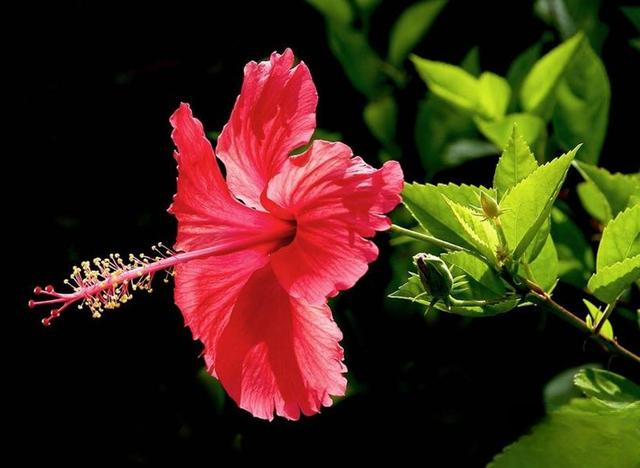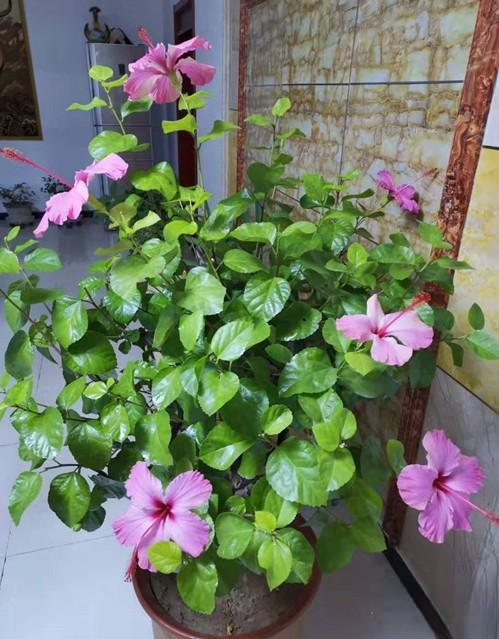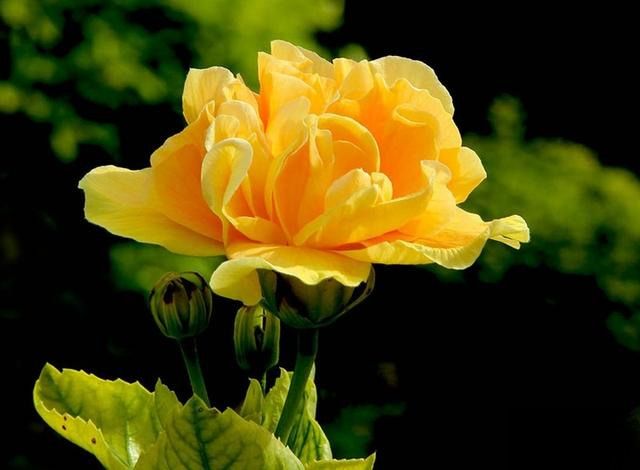Seven tips for growing hibiscus: simple management, and it can bloom for 300 days
Hibiscus is also called big red flower, Buddha mulberry, hibiscus, etc. It has large and colorful flowers, rich colors, bright and dazzling, and a very long flowering period. It is often placed in balconies, windowsills, living rooms, etc. by flower lovers as potted plants, which can purify the air and beautify the environment. Hibiscus likes warm, humid, and sunny environments, and is not shade-tolerant, cold-tolerant, or drought-tolerant.
Hibiscus is highly adaptable and requires little management. If managed properly, it can bloom year-round. If you do the following seven things, your hibiscus will bloom large and colorfully, and will bloom year-round.

Hibiscus is also called big red flower, Buddha mulberry, and hibiscus.
1. Temperature
In order to ensure that hibiscus blooms throughout the year, the room temperature in winter should not be lower than 15°C. If it is lower than 5°C, it will easily freeze to death.
2. Lighting
Hibiscus is a positive flower. If there is insufficient light, the buds will fall off, the flowers will be small, dark in color or not bloom. The number of hours of light per day should not be less than 8 hours. If the light is insufficient, artificial incandescent lamps can be used to supplement the light.

There is absolutely no problem with growing hibiscus in pots indoors
3. Watering
Hibiscus has thin and large leaves and requires a lot of water, so watering is necessary. Usually water once a day, and water thoroughly. Water once in the morning and evening every day during the dog days, and spray water on the ground several times to cool down and increase the humidity of the air to prevent the flowers and leaves from falling early. There should be no water accumulation in the pot each time you water it, and the pot soil must be loose and well-drained.
4. Fertilization
Hibiscus needs a lot of fertilizer. Apply a thin cake fertilizer liquid every 7-10 days. Because hibiscus likes slightly acidic soil, 0.1% black sail (ferrous sulfate) can be added to the cake fertilizer liquid. Apply diammonium phosphate once a month, about 15 grains each time, and sprinkle evenly along the inner edge of the pot. It will dissolve a little every time you water it, and the fertilizer effect will last long.
A place to communicate and chat with flower lovers. Learn about flower cultivation, flower cultivation techniques, flower cultivation help and other flower cultivation knowledge, to help flower lovers grow flowers and bring flowers into the home!
5. Pruning
Hibiscus has strong branching and sprouting abilities, which is conducive to the renewal of hibiscus branches. Cut off the overlong branches and some weak and dense branches in time to promote new branches and maintain the perfect potted tree shape. The new branches will soon bud and bloom.

Hibiscus
6. Reproduction
The hibiscus is usually propagated by cuttings. Choose two-year-old healthy branches or current-year semi-lignified branches as cuttings, cut 10 cm, leave the top leaves, and make the cut flat. Insert them into the sand bed, 4 to 5 cm deep (the sand bed requires 15 to 20 cm of sand). Immediately after inserting, water thoroughly once, then cover with plastic cloth, and spray water frequently on the cutting bed to increase humidity. After 1 week, it can gradually be exposed to sunlight. At 18℃-25℃, it will take root in about 20 days.
About 30 days after cutting, the cuttings have strong root systems and should be potted in time. The size of the pot can be determined according to the size of the plant. Generally, a pot with a diameter of 12-15 cm can be used for surviving seedlings. The potting soil is prepared with a volume ratio of 10:1:2 based on garden soil, cake fertilizer, and sand. When planting, the roots should be damaged as little as possible and shaded appropriately to reduce damage to the seedlings and help them resume growth as soon as possible.
Hibiscus: Daily cultivation and home care of hibiscus. Hibiscus is native to China and has nothing to do with Japan. Please don't criticize me.
7. Pest and disease control
Hibiscus is susceptible to aphids, root-knot nematodes, stem rot, etc. The prevention and control method is: mix 1% of furadan granules and 1% of carbendazim into the potting soil.